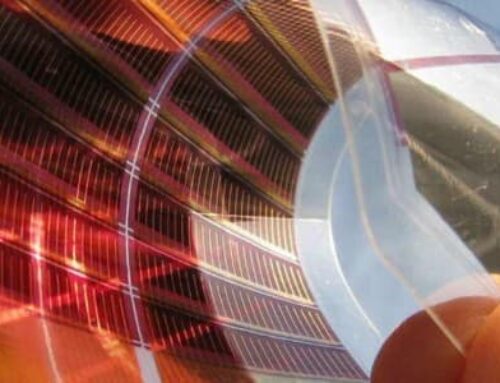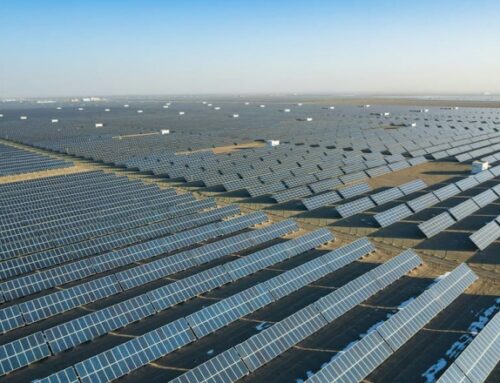SolarBank’s $49.5M Qcells Deal Accelerates U.S. Solar Growth – Exclusive Interview with CEO Dr. Richard Lu
January 7, 2025
SolarBank Corporation (NASDAQ: SUUN) has announced a significant deal with Qcells, a subsidiary of South Korea’s Hanwha Solutions. Qcells, through an affiliate, has entered into agreements to purchase four solar power projects in upstate New York.
These ground mount projects—Gainesville, Hardie, Rice Road, and Hwy 28 are under development and have a combined capacity of 25.577 MW. The total value of the sale and the engineering, procurement, and construction (EPC) agreements amounts to approximately $49.5 million.
SolarBank Brings Solar Access to Everyone
SolarBank developed the sites and has successfully passed the Coordinated Electric System Interconnection Review (CESIR). This confirms their feasibility for connection to the local electricity grid.
The projects will now progress as individual solar installations under engineering, procurement, and construction (EPC) agreements with Qcells, having manufacturing facilities in the U.S., Malaysia, and South Korea. The company serves customers in the utility, commercial, government, and residential markets with reliable clean energy solutions and long-term partnerships.
The company also plans to manage the projects through an operations and maintenance contract after completing construction. Once operational, the projects will serve as community solar systems, allowing multiple people to benefit from a shared solar energy system without installing panels on their homes.

In an exclusive discussion with CarbonCredits, Dr.Richard Lu, CEO of SolarBank expressed his thoughts and the deal’s impact on the general community and the U.S. at large.
Read on…
CC: What inspired SolarBank to partner with Qcells for these community solar projects?
Dr. Richard: As the SUUN will always shine, we want to do our part to “Make America Great Again”. Solar energy is the power that we can deliver at a low cost in a timely manner, and we want to use “Made in the USA” solar panels to achieve our strategic goal.
CC: How will “Made in the USA” equipment for these projects impact both SolarBank and the broader clean energy sector?
Dr. Richard: For Solarbank, the Made in the USA panels demonstrate our commitment to supporting domestic production for the clean and renewable energy industry. For the sector, it will enable the industry to meet its demand with domestic supplies.
CC: Any challenges you foresee during the EPC phases of these four solar projects? If Yes, how SolarBank plans to address them?
Dr. Richard: We have every confidence to deliver these 4 solar projects as the EPC using domestic solar panels. We have completed initial designs with the “Made in the USA” solar panels and we did not encounter any engineering issues. We have started site mobilization and will work with our long-term construction crews on these projects.
CC: What are SolarBank’s long-term goals in supporting the development of community solar projects and clean energy goals of America?
Dr. Richard: As demand for clean and renewable energy grows across general society, commercial, industrial, and especially digital economy—SolarBank is playing a key role in meeting this demand in the USA. Community solar enables more than 50% of Americans to enjoy clean and renewable energy at a lower cost, without having to install solar panels on the roof of their houses, if they live in a house.
Moving on, SolarBank further highlighted the many benefits of community solar projects.
- These solar panels will feed clean energy into the local electricity grid.
- Renters and homeowners who subscribe to the program can earn credits on their electricity bills based on the solar energy generated.
- This setup will help save and bring environmental benefits to dozens or even hundreds of participants, depending on the size of the project.
These projects are expected to qualify for incentives under the New York State Energy Research and Development Authority (NYSERDA) NY-Sun Program. This initiative supports renewable energy adoption and helps make solar power more affordable to communities.
North American Growth Strategy: Development + EPC + O&M + IPP
Navigating the Potential Risks to Development
While the deal is promising certain risks remain. The press release revealed that developing these projects requires obtaining permits and securing financing for Qcells. Changes in government policies or reductions in solar incentives could also affect future project viability.
Qcells will make payments for the purchase and construction costs in stages. If Qcells cannot secure financing, SolarBank is obligated to reacquire the projects, retaining an initial payment as compensation. Essentially, SolarBank plans to retain an operations and maintenance contract for these projects after construction. This move will ensure continued involvement in their operation and enjoy long-term success.
Jin Han, Corporate Officer, Head of Distributed Energy at Qcells North America has affirmed this deal by noting,
“At Qcells, we are dedicated to delivering clean, affordable energy solutions to communities nationwide and around the globe. With a commitment of nearly $2.8 billion, we are working hard to onshore production of the solar supply chain from ingots and wafers to cells and finished panels. Each step we take strengthens domestic solar manufacturing, drives the clean energy transition, and brings us closer to a sustainable future for all.”
SolarBank Shares Surge 11% After $49.5M Qcells Deal
According to S&P Global SolarBank shares rose on Monday following the company’s announcement of selling its solar projects for $49.5 million. The stock gained 11%, reaching its highest at $2.66.
source: Yahoo Finance
Thus, this collaboration between SolarBank and Qcells is pivotal for advancing renewable energy in New York while supporting U.S.-based solar manufacturing. And we hope it Makes America Great Again!
Search
RECENT PRESS RELEASES
Related Post



